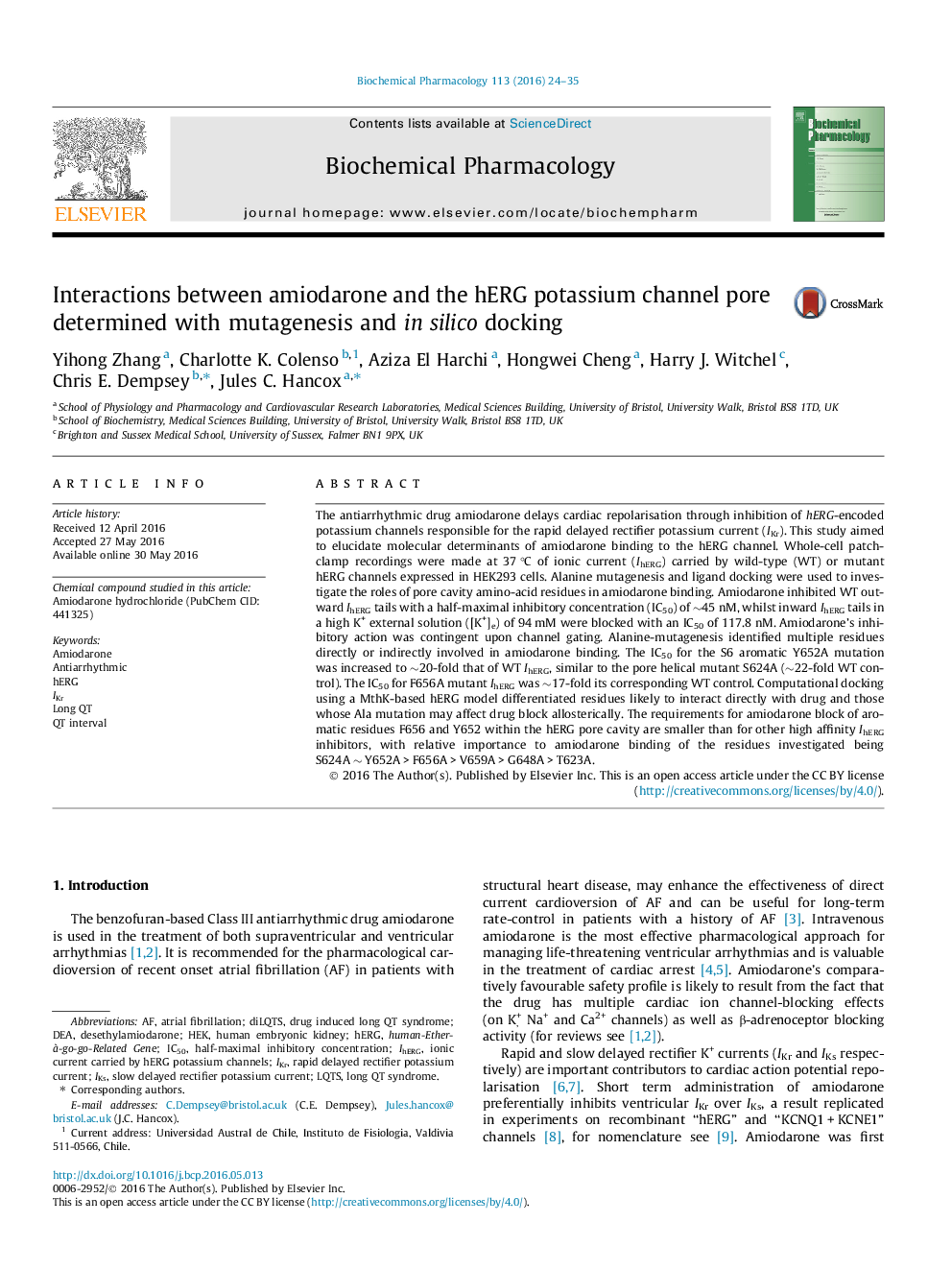| کد مقاله | کد نشریه | سال انتشار | مقاله انگلیسی | نسخه تمام متن |
|---|---|---|---|---|
| 5823080 | 1557900 | 2016 | 12 صفحه PDF | دانلود رایگان |

The antiarrhythmic drug amiodarone delays cardiac repolarisation through inhibition of hERG-encoded potassium channels responsible for the rapid delayed rectifier potassium current (IKr). This study aimed to elucidate molecular determinants of amiodarone binding to the hERG channel. Whole-cell patch-clamp recordings were made at 37 °C of ionic current (IhERG) carried by wild-type (WT) or mutant hERG channels expressed in HEK293 cells. Alanine mutagenesis and ligand docking were used to investigate the roles of pore cavity amino-acid residues in amiodarone binding. Amiodarone inhibited WT outward IhERG tails with a half-maximal inhibitory concentration (IC50) of â¼45 nM, whilst inward IhERG tails in a high K+ external solution ([K+]e) of 94 mM were blocked with an IC50 of 117.8 nM. Amiodarone's inhibitory action was contingent upon channel gating. Alanine-mutagenesis identified multiple residues directly or indirectly involved in amiodarone binding. The IC50 for the S6 aromatic Y652A mutation was increased to â¼20-fold that of WT IhERG, similar to the pore helical mutant S624A (â¼22-fold WT control). The IC50 for F656A mutant IhERG was â¼17-fold its corresponding WT control. Computational docking using a MthK-based hERG model differentiated residues likely to interact directly with drug and those whose Ala mutation may affect drug block allosterically. The requirements for amiodarone block of aromatic residues F656 and Y652 within the hERG pore cavity are smaller than for other high affinity IhERG inhibitors, with relative importance to amiodarone binding of the residues investigated being S624A â¼Â Y652A > F656A > V659A > G648A > T623A.
Journal: Biochemical Pharmacology - Volume 113, 1 August 2016, Pages 24-35